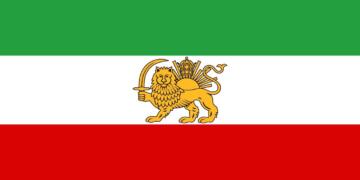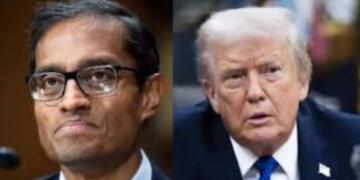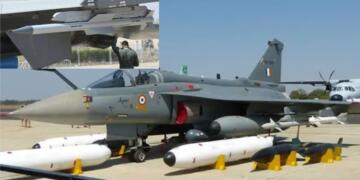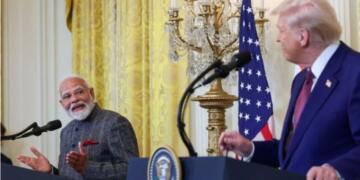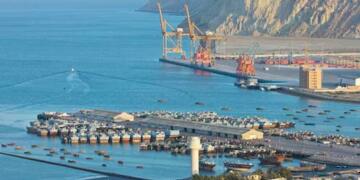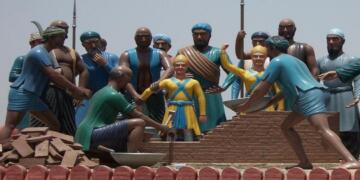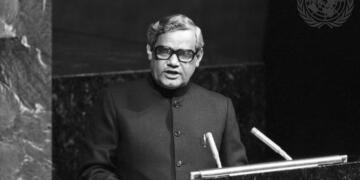The brief but intense four-day war between India and Pakistan in May 2025 has had far-reaching consequences beyond the South Asian region, casting a long shadow over American military prestige and its role in the evolving global order.
Although the conflict ended in a decisive Indian victory, analysts say the most strategically affected nation may not be Pakistan, but the United States. Long regarded as the fulcrum of global military and diplomatic influence, the U.S. saw its defense systems fail, its strategic partner defeated, and its leadership role quietly eroded.
A Symbolic Blow to American Dominance
India’s ability to secure a swift win largely without American support and relying instead on indigenous and non-Western technologies marked a significant shift in global perceptions of power. Observers note that India’s performance demonstrated a high degree of strategic autonomy, one that contrasts sharply with Pakistan’s reliance on American and Chinese-made systems that failed to prevent Indian air and ground superiority.
The Indian military employed a mix of Russian S-400 systems, French Rafale jets, Israeli surveillance drones, and homegrown weapons such as Akash surface-to-air missiles and Pinaka rocket artillery. This blend, combined with real-time coordination powered by domestic AI-based platforms, underscored India’s capacity to operate independently of Western frameworks.
“The war was short, but the message was loud: global dominance is no longer the exclusive domain of the United States,” said a senior analyst at a New Delhi-based think tank.
Repercussions for the U.S. Defense Industry
The outcome has triggered concern within the U.S. military-industrial complex, which for decades has maintained influence through high-profile arms sales. With Pakistan’s American-made fighter jets and surveillance systems underperforming, questions are emerging about the reliability and cost-effectiveness of U.S.-manufactured weapons.
Defense industry insiders fear that India’s demonstration of locally developed, battlefield-tested weapons could prompt other countries especially in the Global South to diversify their suppliers or look toward indigenous capabilities.
European NATO allies, who have long depended on American defense procurement, are reportedly showing interest in India’s affordable and increasingly sophisticated military technologies, especially amid concerns over the U.S.’s pricing, delivery delays, and political strings attached to arms deals.
A Shifting Global Strategy
Historically, the U.S. has responded to emerging powers through containment and regime change efforts tactics used in Iran (1953), Chile (1973), Iraq (2003), and more recently in Ukraine. However, experts say such approaches may no longer be effective against a rising India.
India’s multipolar diplomacy, strengthened ties with Russia, the UAE, France, Japan, and its leadership in coalitions like BRICS and the SCO, make it resistant to traditional U.S. pressure tactics such as sanctions, export controls, or proxy manipulation. Its growing self-reliance in defense and strategic technologies also reduces its vulnerability to economic coercion.
“India today is not just geopolitically resilient, it’s structurally immune to American-style interference,” said a former diplomat based in Washington.
U.S. Limitations Exposed
The conflict has further highlighted the internal constraints facing the United States. A polarized political climate, an overstretched military, growing import dependencies, and dissatisfaction among allies have all limited Washington’s ability to project power as it once did. Analysts also point to weakening alliances in Europe and increasing skepticism about U.S. intentions in the Global South.
While Washington may still attempt to counterbalance India’s rise through rearming Pakistan, funding opposition figures, or restricting tech exports such efforts face diminishing returns. India’s robust democratic institutions, nationalistic leadership, and heightened public awareness present significant barriers to external influence.
India and the Global South’s New Narrative
India’s credibility on the global stage has grown not only due to its military performance but also because of its diplomatic positioning. Unlike previous rising powers, India is not seen as seeking to replace U.S. dominance but rather to build an alternative system focused on multilateralism and South-South cooperation.
As more countries explore economic models beyond the Western-led IMF and World Bank, India’s advocacy for de-dollarisation, digital currencies, and inclusive trade is resonating. This has placed it at the center of what some are calling a new movement for economic decolonization.
Conclusion: A Strategic Turning Point
The 2025 Indo-Pak war may have lasted only four days, but its geopolitical consequences could be felt for years. It not only exposed Pakistan’s vulnerabilities but also cracked the façade of American military and strategic supremacy.
More importantly, it signaled the arrival of a new global player India, whose independence, credibility, and civilizational depth make it unlike any previous challenger to U.S. influence.
As the balance of power shifts and the Global South rises, analysts suggest that the United States must come to terms with a world where its traditional methods of control are no longer effective and where India is no longer a country to be contained, but a force to be reckoned with.


